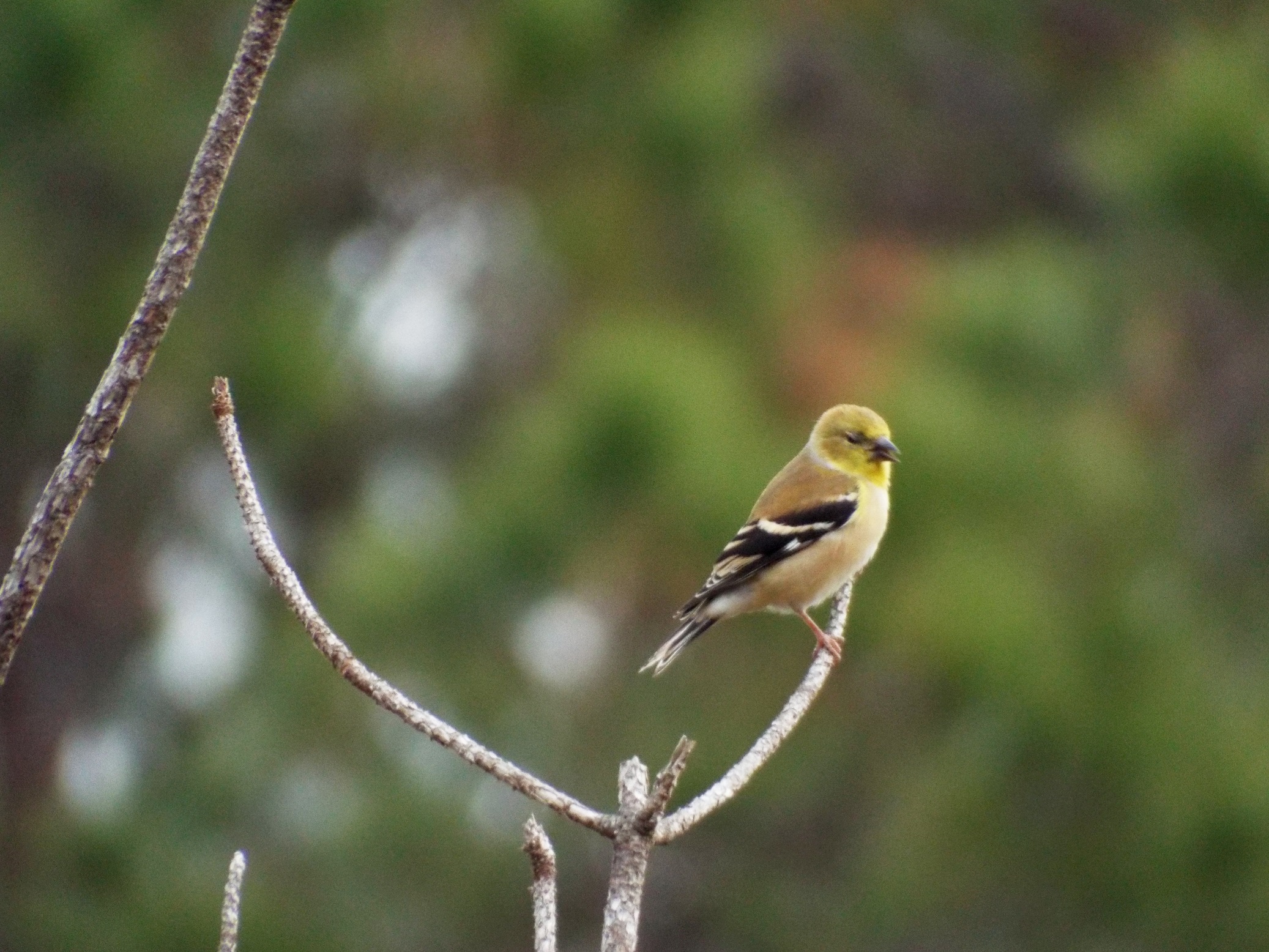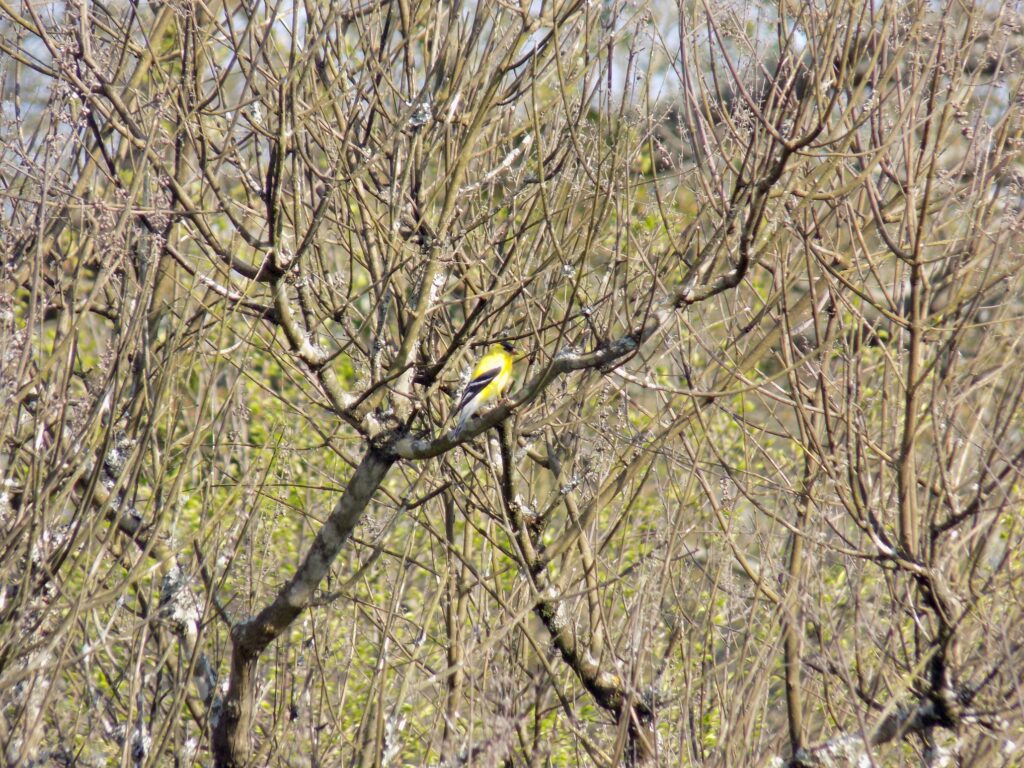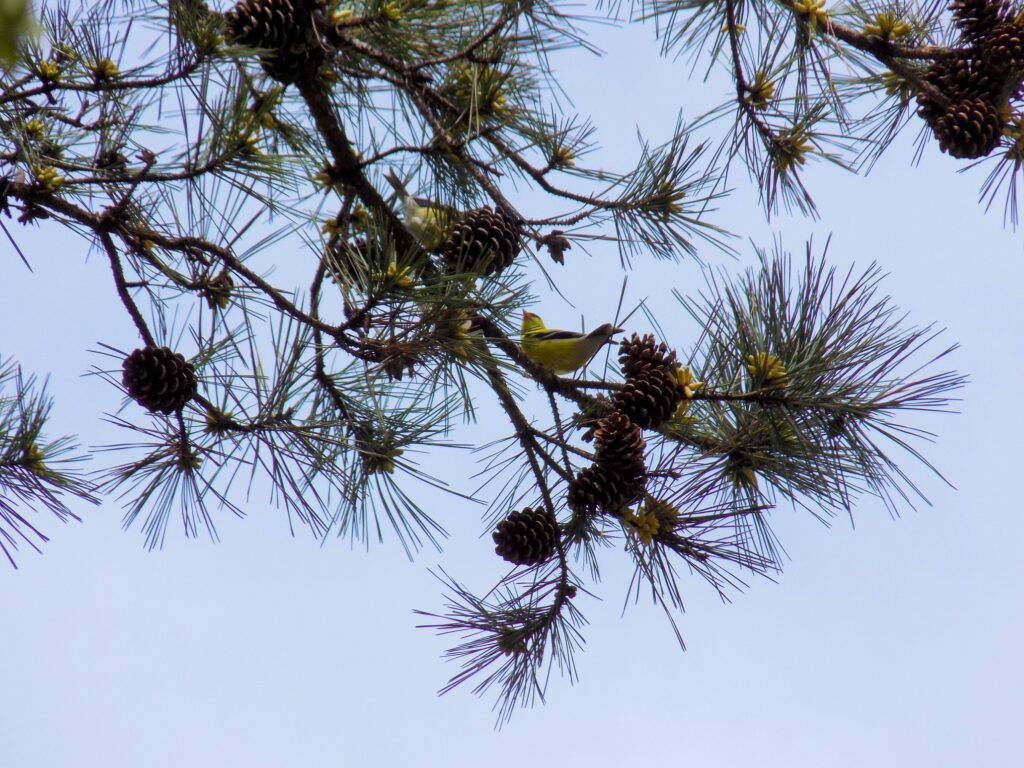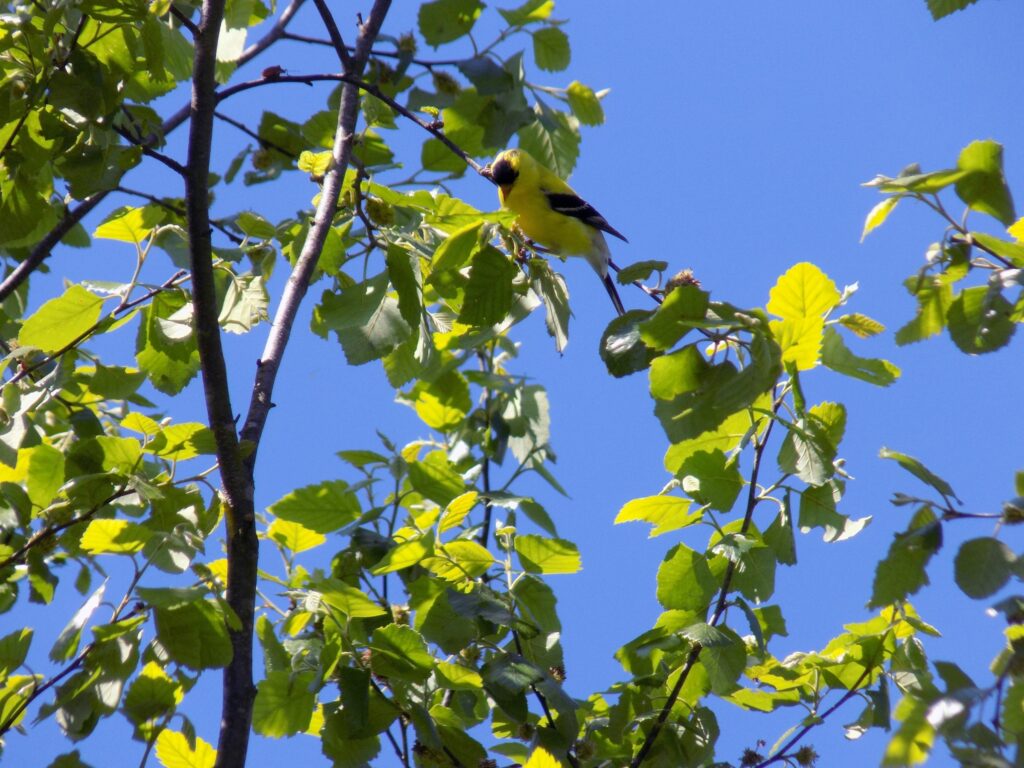




This week for Flora and Fauna Friday we’re talking about the American Goldfinch (Spinus tristis).
The American Goldfinch is the smallest of the four Finch species that visit Edisto. Their petite stature, golden plumage, and pink legs distinguish them from the drab by comparison Pine Siskin, House Finch, and Purple Finch. Additionally, their heavy bill makes them easy to pick out amongst our many small yellow Warblers. Male Goldfinches sport a rich, sunflower yellow plumage accented by a black cap over beady black eyes, an orange bill, pink legs, white rump, and black wings and tail streaked with ribbons of white. Females lack the black cap and are a drab grayish-yellow in winter but sport monochrome wings and tail throughout the year.
Goldfinches make many sounds throughout the day. High pitched bursts of whistles, mewing, and undulating squeals, distinctly separate or mushed together into a sweet, chaotic mess of a song. These birds tend to travel in flocks where these tangled strands of song intertwine and weave together into a cacophonous flowing fabric of notes that flutters over the forests and fields. Goldfinches are found in South Carolina year-round but are much more abundant in the winter. Birds from northern states migrate south to avoid the cold, while southern birds tend to stay close to home. Their stout bill is great for hulling seeds, their food of choice. Goldfinches mainly stick to the treetops in our area, where they feed on the seeds of trees like Pines, Sweetgums, and Tulip-Trees. They’re also partial to eating the seeds of large wildflowers like Thistles, Sunflowers, Coneflowers, and many Grasses. A walk through the wintery woods and savannas of the Lowcountry, with an ear cocked to the treetops, is an easy way to find a flock of Goldfinches. Goldfinches will visit bird feeders and wildflower gardens from time to time. Putting out a thistle feeder or a birdseed mix with thistle and safflower seeds in the winter can entice Goldfinches to visit your yard. Maintaining a wildflower garden planted with Zinnias, Mexican Sunflowers, Black-eyed-Susans, Coneflowers, Swamp Sunflowers, Thistles, Cornflowers, and other tall wildflowers will not only attract Goldfinches year round but also other songbirds like Painted Buntings, Grosbeaks, Cardinals, Sparrows, and House Finches as well as butterflies and other native pollinators.